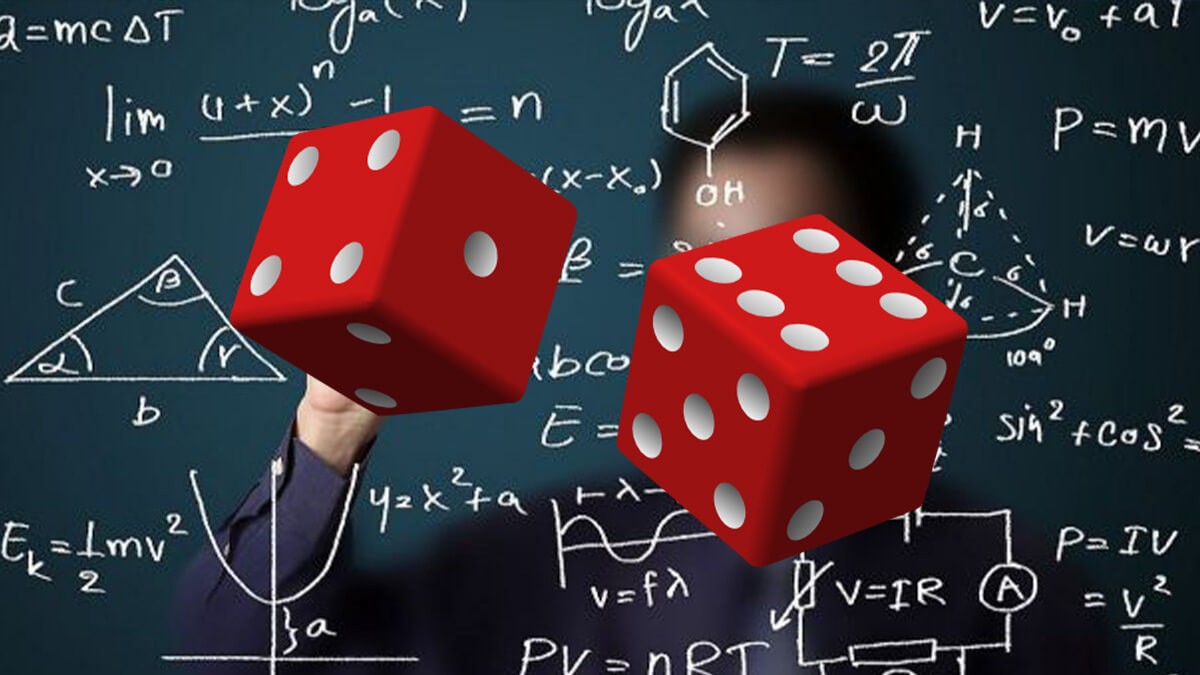Serious gamblers have at least a basic understand of probability. That’s the branch of math that measures how likely something is to happen or not. But the word “probability” also refers specifically to that likelihood.
Odds are just one way of expressing that probability, but it’s a useful way to express an event’s probability.
In this post, I explain how to calculate probability and/or odds. I also explain the difference between probability and odds.
An Event’s Probability Is Always a Ratio
No matter what event you’re looking at, it has a probability of occurring. That probability is just a ratio measuring the number of ways that event can happen versus the number of ways it can’t happen. And if you were paying attention to math in junior high and high school, you know that a ratio is just a fraction.
Any event’s probability can be measured in terms of a fraction between zero and one. If an event has a probability of zero, it will never happen. And if an event has a probability of one, it will always happen.
- Here’s an Example: If you roll a six-sided die, you have zero probability of getting a seven as your result. That’s just because the die is numbered from one through six. But the probability of getting a result from between one and six is one. If you want to know the probability of something uncertain, though, you just divide the number of ways the event in question can happen by the total number of outcomes.
- Here’s an example: If you want to know the probability of rolling a six on that die, it’s 1/6. The one represents the number of ways you can roll a six on a single die. A standard single die has only one side out of six with “one” on it. The total number of possible outcomes is six. You can get any of the following results when rolling a single die: 1, 2, 3, 4, 5, or 6.
Different Ways to Express a Probability
In the previous example, I expressed the probability of rolling a six as a fraction. That’s only one way of expressing that ratio, though.
One of the other common ways to express a probability is to convert that fraction into a percentage. That’s just a matter of division. And if you do the division, you wind up with a percentage of 16.67% in the above example.
You could also express that as a decimal, but that’s rare with most casino games or poker games. The same probability expressed as a decimal is 0.1667.
One of the most useful ways of expressing that probability, though, is as odds. When you express odds, you compare the number of ways that something can’t happen versus the number of ways it can happen.
In this case, the odds are 5 to 1. You have five ways of rolling a number other than six, and you have only one way of rolling a six.
I’ll explain why this is so useful in the next section.
Why Odds Are Such a Useful Way to Express Probability
I’ve already established that odds are a useful way to express probability, but just like the word “probability,” the word “odds” has two different meanings. I’ve already explained how odds work when expressing a probability, but odds also refer to the payout for a bet.
This is also a ratio, and it’s a ratio between what you stand to win and what you stand to lose. Payout odds are expressed using either “to” or “for” depending on what kind of gambling game you’re playing.
If you’re playing a table game in a casino—like blackjack, craps, or roulette—payout odds are expressed in “to” format.
- Here’s an example: A single number bet in roulette pays off at 35 to 1 odds. This means that if you win, you get 35 betting units as winnings. AND you get to keep your initial stake—the “1” in the “35 to 1.” If you lose that bet, you lose the 1 unit. If you’re playing a gambling machine in a casino, like a slot machine or a video poker game, payout odds are expressed in “for” format.
- Here’s an example: You’re playing a slot machine game with a top jackpot of 1,000 coins. It’s understood that the payout for that is 1000 for 1. You lose the money you wagered as soon as you spin the wheel. Your payout is “in exchange for” instead of “to.” Odds for lottery games are also expressed in “for” format.
It’s an important distinction to understand.
How Understanding the Odds Becomes Useful
Let’s say you’ve never played roulette before, and you’re not sure if it’s a good game or not compared to some of the other casino games you want to play. How would you figure that out?
Look at the single-number bet again. If you count the total number of potential outcomes, you’ll get a total of 38. A standard American Roulette wheel has 38 numbers on it: 1 through 36, 0, and 00.
This means that the odds of winning a single number bet are 37 to 1. You have one way of winning compared to 37 ways of losing. But the bet pays off at 35 to 1.
It’s clear that the casino has the advantage here, but how much of an advantage is it?
It’s just a question of subtracting the payout odds from the odds of winning. Most people, when they’ve done that calculation, express the difference as a percentage. In this case, that percentage is 5.26%.
If you compare that with the house edge for a game like blackjack, which usually averages around 1%, you might decide that blackjack is a far better game for you to play.
That’s not the only consideration, but it’s an important one.
How Understanding Odds Can Help Your Poker Game
In poker, you’ll hear players talk about pot odds. The pot odds are a ratio of the money in the pot to the amount it would cost you to call a bet.
Let’s say that there’s $100 in the pot, and someone before you has bet $10. This means that the pot is offering you 100 to 10 odds, which you can reduce to 10 to 1 odds.
Let’s also say that you have four cards to a flush, and you’re going to see two more cards (this is a common situation in real money Texas hold’em).
What are the odds of making your straight here? You know that there are 13 cards of that suit in the deck, and you know that four of them are accounted for. This means you have nine “outs,” or ways of making your hands.
You also know the identity of five of the cards in the deck, so you’re looking at nine possible outs from 47 odds. Your probability of hitting that flush is 9/47, or about 1/5.22.
That means your odds of completing the flush are 4.22 to 1.
Since you’ll get paid off at 10 to 1 odds, this is a profitable call. You’ll miss your flush four times out of five, but the time that you win, you’ll get 10 to 1 on your money, making this a profitable play.
Also, you get two shots at this because you have two cards to come. This improves your odds even further. Now you have a roughly 1 in 3 probability of making your hand. That’s 2 to 1 odds.
Most poker decisions can be thought of in terms of outs and pot odds, but you have more to account for than just this. You must also account for what kinds of cards your opponents might be playing. Just because you make your flush, it doesn’t mean you’re a lock to win.
There’s a big difference between having an ace-high flush and a five-high flush, for example. At that point, you might have to discount the odds based on your estimate of the probability that your opponent will be holding higher cards of the same suit.
Finally, poker players also account for “implied odds.” This means that a call doesn’t just have pot odds based on what’s in the pot now, but you’ll also see a bigger pot by the showdown. These implied odds can make an otherwise unprofitable call into a profitable call.
Conclusion
If you want to gamble intelligently, you must at least have a basic understanding of how to calculate probability and odds. Luckily, the math for doing this is almost absurdly simple. It’s just a matter of ratios.
It can get more complicated, but the calculations in this post are always the starting point for determining probability and odds.
Michael Stevens
Michael Stevens has been researching and writing topics involving the gambling industry for well over a decade now and is considered an expert on all things casino and sports betting. Michael has been writing for GamblingSites.org since early 2016. …



